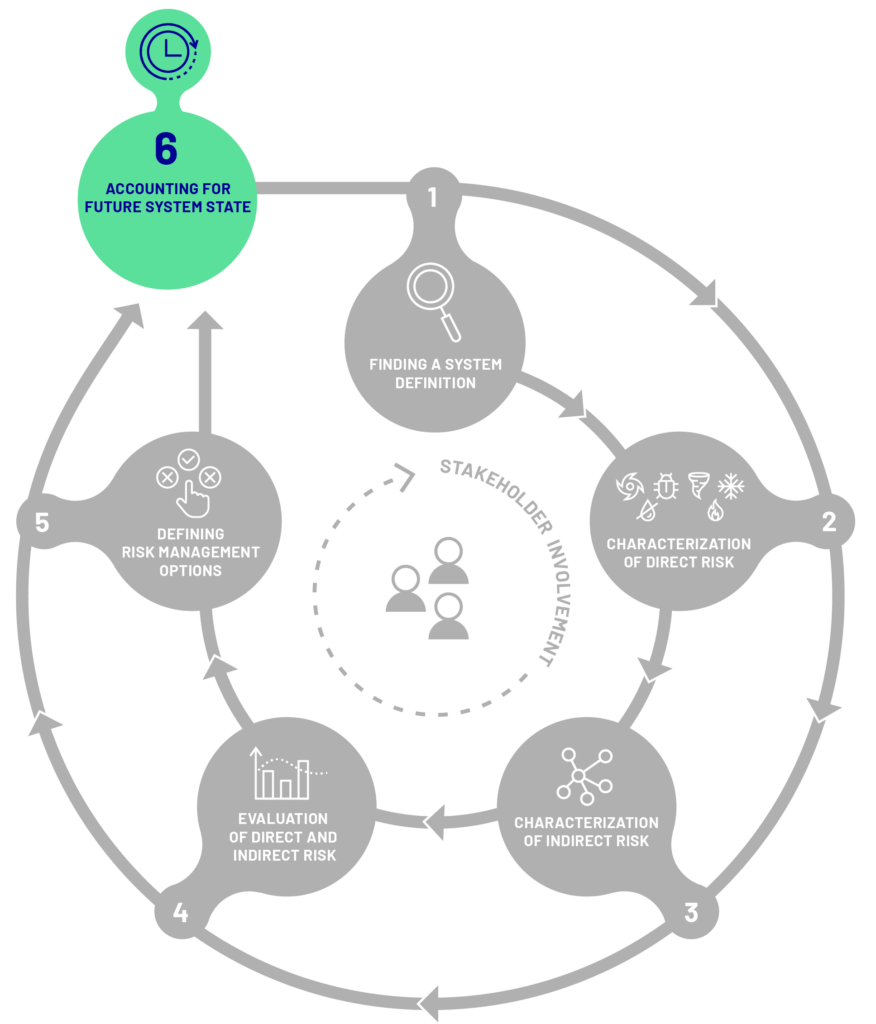Accounting for future system state
In Step 6, we think about what the system will look like in the future, considering significant global forces and driving changes such as climate change, population and land use change, and environmental shifts. We also take into account the risk management options introduced in Step 5 and consider how the introduction of these will change the risk in the system. The idea is also to assess if the planned risk management options, designed to manage and reduce direct and indirect risks of various hazards, will still work in the future and how they influence the system.

Guidance protocol questions
The following are questions that can help decision-makers, stakeholders, and relevant parties in successfully walking through step 6 of the framework. Consider this set of questions as an initial guide for your investigation, recognizing that it is not an exhaustive list.
Influence of larger processes
- What are the various broader influences that could potentially impact your system?
Examples of such influences include climate change, urban development, economic shifts, demographic changes, etc. Consider how these factors may alter system boundaries, exposure, and the vulnerability of system elements, as well as hazard characteristics such as frequency and magnitude.
Influence of considered risk management options
- How do the risk management options you selected in Step 5 influence your system and other systems, i.e. do they increase risk somewhere else?
- How will these risk management options perform under future system change taking into account wider influences (see examples below)?
As in the previous steps of the framework, we are referring to the fictitious multi-hazard event in the Danube Region to exemplify the process of navigating through this stage of the framework. This serves as a practical illustration of how to approach this step and how to address the guidance protocol questions mentioned earlier, using our hypothetical scenario as a guide.
CONCEPTUAL EXAMPLE
There was a drought in the Danube Region (e.g. the 2015 or 2022 drought) that left severe consequences across sectors. After several months, the region is hit by a severe flood (e.g. the 2006 flood) causing severe loss and damage.
- Changes in land use policies affect direct and indirect risks
- Climate change increases the frequency and severity of droughts and floods
- exposure change due to population growth
- Increased water demand due to population growth
